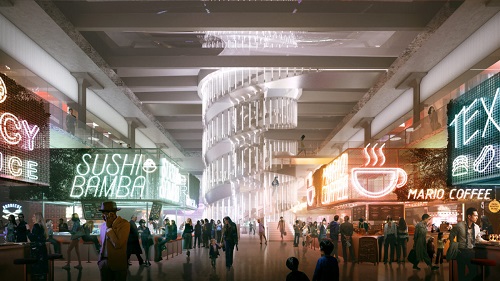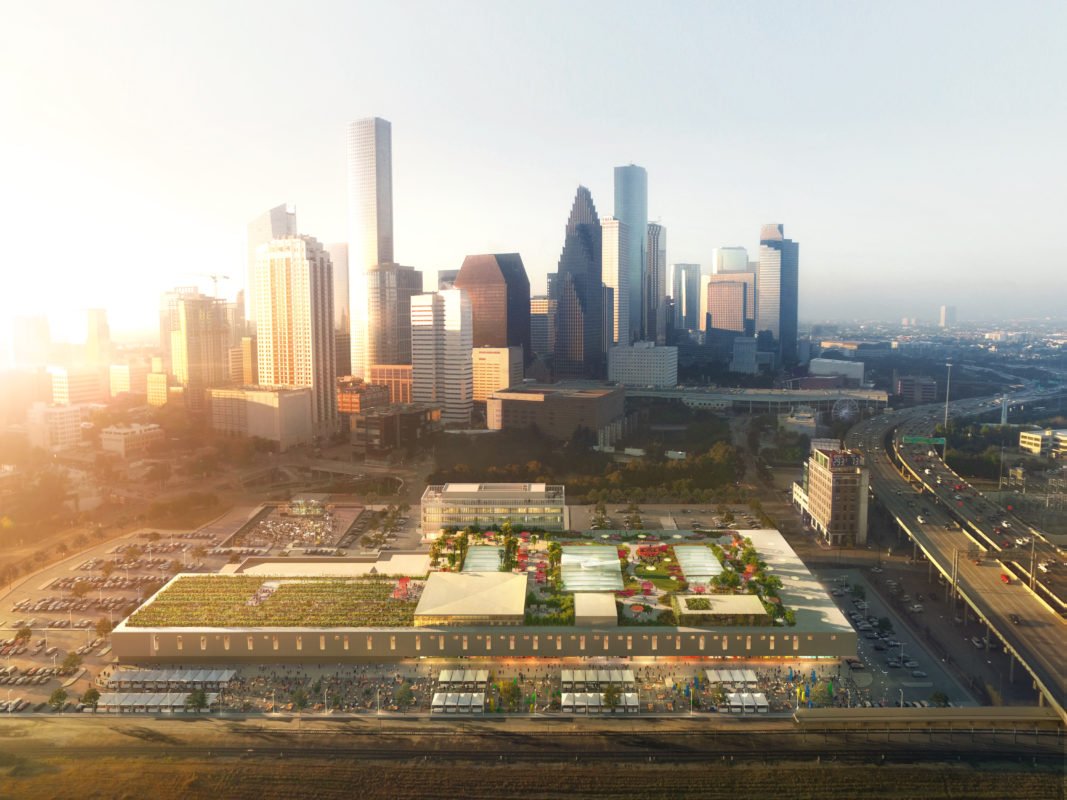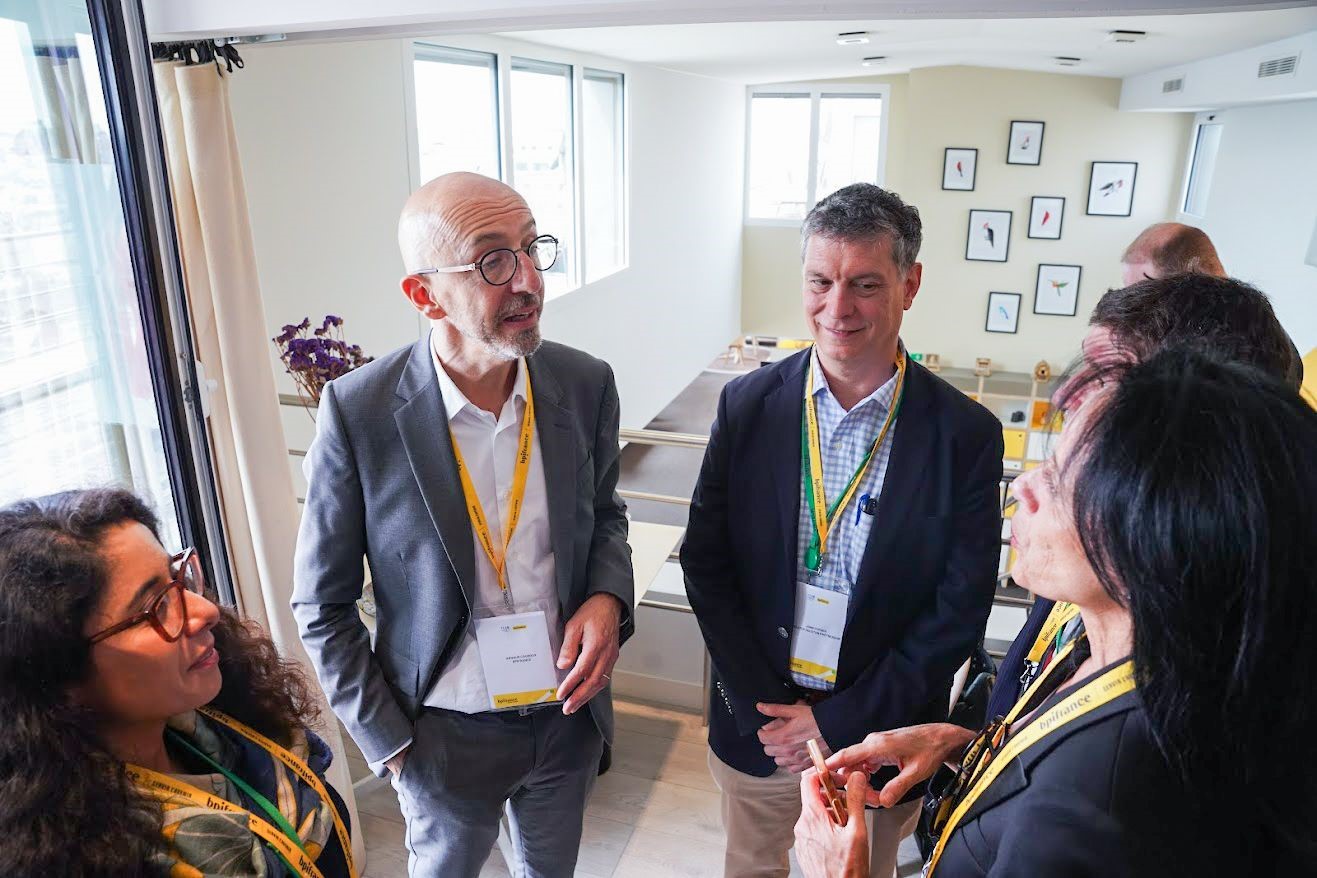Rooftop Park, Dining Part of Reimagined Downtown Post Office
Published Jun 28, 2019 by Maggie Martin
Developers have unveiled their plans to transform an iconic downtown landmark.
Earlier this week, Houston-based Lovett Commercial laid out how they plan to renovate the former Barbara Jordan Post Office at 401 Franklin Street into a 550,000-square-foot mixed-use space. Dubbed POST Houston, the development will include retail, restaurants and co-working spaces.
“We hope POST Houston will become a destination for Houstonians and travelers, and we are determined to create a one-of-a-kind urban ecosystem that will showcase the vibrancy of our great city,” Lovett President Frank Liu said at this week’s groundbreaking ceremony.
According to the Houston Business Journal, Lovett’s redevelopment plans call for “three atriums to be cut through the building’s second floor and roof. Three distinct staircases will run through the atriums…to promote interactions among visitors as they move between floors.”
According to the HBJ report, the first floor will be “centered around cultural experiences, food and a coworking space,” with a dining district that’ll be “modeled on a Tokyo night market, where visitors will have a variety of food options to choose from.”
The second floor will be reserved for office space.
POST Houston will also include a nearly six-acre rooftop area that’ll include a park and garden with panoramic skyline views of downtown Houston. Dubbed “Skylawn,” the area “will be like rooftop-to-tabletop. Restaurants will be able to order from the farm with literally zero carbon footprint, no transportation whatsoever,” said Frank Liu’s son, Kirby Liu.
Lovett said construction is expected to take about a year.
The former post office is located on the north end of downtown near the intersection of I-10 and I-45, near Houston’s Theatre District and directly along Buffalo Bayou Park. As Houston Public Media reports, “the redevelopment comes at a time when more people are moving downtown and residential development here is booming.”
According to Central Houston, downtown is home to more than 4,500 companies that employ nearly 158,000 workers. The area has just over 6,000 residential units with another 2,000 currently under construction or planned. There are also 7,800 hotel rooms across 25 different properties and more than 410 restaurants and bars, with more underway. Altogether, over $2.3 billion in development is under construction in the district.
Post Houston’s transformation is happening near the north end of the Innovation Corridor, the 4-mile long, light rail-connected corridor being developed to link Houston’s innovation ecosystem. The Ion, the former historic Sears building in Midtown that’ll transform into a 270,000-square-foot facility, will serve as the center of Houston’s innovation corridor.
Learn more about Houston’s innovation ecosystem here.
 The Houston Report
The Houston Report




















